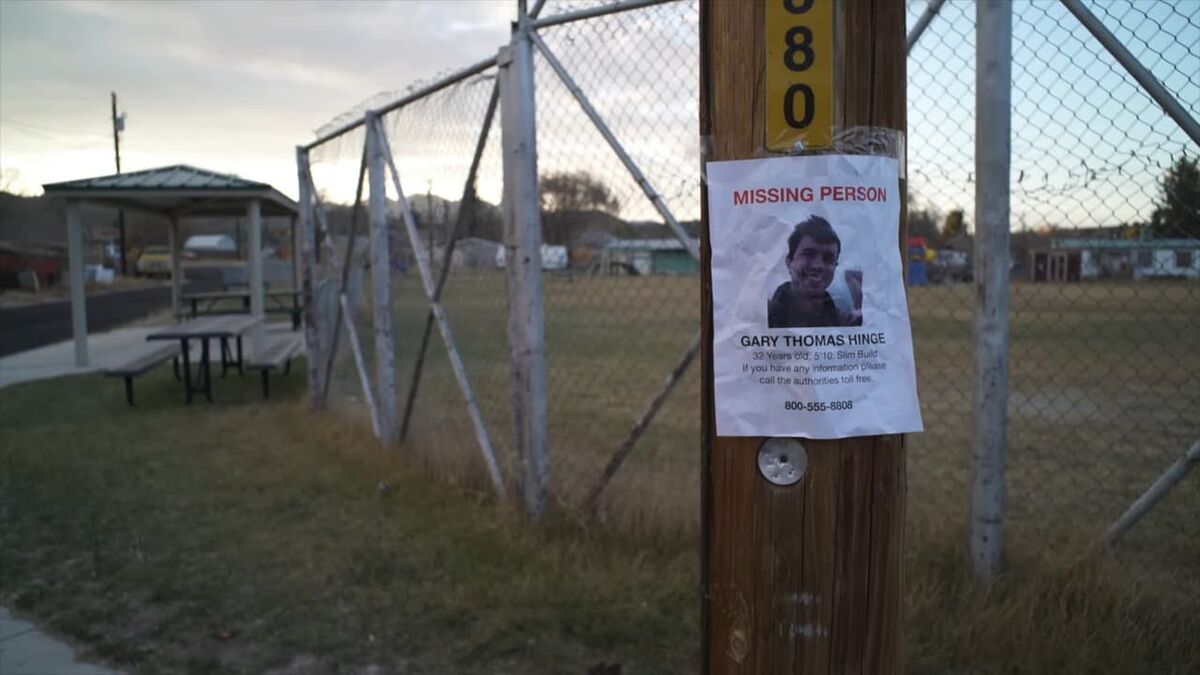‘Horror in the High Desert (2021)’ is a pseudo-documentary style, found footage mystery horror that revolves around the disappearance of a man named Gary Hinge. The story, based in Nevada, eagerly employs the use of the state’s ominous and creepy reputation for conspiracies; and crossbreeds it with its menacing geographical attributes. This sinister concoction sets the perfect scene for some exceptionally unnerving storytelling.
The movie has a fairly slow start wherein it primarily focuses on character introduction and development, in order to captivate the audience’s interest and get them emotionally invested in its world. Once the plot does that, it extends its horror roots and starts to build a mystery around the missing person case by introducing violently disturbing themes and ideas. As the story progresses, the audience is encouraged to wonder exactly where the thread of the case leads to. The build up is nicely done, and the pay off in the end though arguably a bit cliched and predictable, manages to still be suitably eerie and bone-chilling.
This indie’s approach to horror heavily relies on long stretches of intimidating emptiness, and it seeks to incite a sense of crippling dread into the audience. Though this is certainly well done, the horror part of the story ends up being vastly overshadowed by its documentary elements. Consisting of interviews by Gary’s sister, Beverly; his roommate, Simon; a hired Private Investigator Bill and a reporter named Roberts— the writing and consequent execution of it in this film is incredibly well done. The steady flow of the plot manages to keep the viewers engaged and informed; while simultaneously working towards incorporating horror aspects into the plot. The story manages to achieve this without once breaking the illusion of realism. But let’s talk about exactly how real that illusion truly is and what part is based on actual events. SPOILERS AHEAD.
The Semi-Real Inspiration Behind Horror in the High Desert

‘The Horror in the High Desert (2021)’ is partially based on a true story. At first glance, there is nothing preventing the film from being outright misidentified as an actual documentary, but even after you find out of it’s fictionality the story still feels genuine and authentic enough to keep you wondering. For good reason too. The basic storyline of the film is actually inspired by the real life disappearance of a man named Kenny Veach.
Much like ‘Horror in the High Desert (2021)’s Gary, Kenny too was a hiking enthusiast from Nevada who liked to take long excursions out into the wild desert. Though his story goes a bit differently than Gary’s. Instead of an eldritch cabin in the middle of empty, lonely nowhere, Kenny’s story starts with him coming across a similarly eldritch cave in the Mojave Desert. The cave allegedly had a perfect M shaped entrance, and a petrifying aura to it. On his first encounter with the cave Kenny’s so creeped out by it that he finds himself leaving its vicinity at once.
Later, he recounts this incident in the comment section of some YouTube video. The comment inevitably ends up gaining traction as well as the interest of numerous people. Encouraged and goaded by these comments on his YouTube channel, Kenny Veach sets out on a hike in the desert once again with the intention of finding this cave, so that he could document it for his viewers. Though Kenny fails on the first try, he tries again. This time, however, he never makes it back. A volunteer based search party eventually finds his cell phone, but no leads are obtained from it and so the case inevitably goes cold. In the real world, Kenny Veach’s story never got an ending act, and instead turned into an urban legend.
Gary and Kenny: Both Remain Unfound

In the film, we are given endearing insights and anecdotes about Gary by his sister and his roommate— within the first 10 minutes the narrative successfully paints Gary as someone fascinating, that you as an outsider simply must be interested in finding out more about. The audience’s relatability and concern for Gary is directly related to ensuring their ultimate interest, by the time that the climax of the movie rolls around. The first person perspective Gary’s hand held camera provides, plays well into the realism aspect that the found footage technique often specializes in. Shaky camera work, burnt and blurry infrared footage, and an excellent use of creepy background sounds all conglomerate into a terrifying climax that manages to send a chill down the audience’s spine. In the end Gary’s corpse— save for his mutilated camera clutching hand— is never found, neither is the strange cabin in the wild or the killer.
In the case of real world Kenny Veach, much of the same is true. Kenny’s body was never found, and the mystery of what happened to him still persists to this day. There are many conspiracy theories and speculations still surrounding his disappearance, but in the end no closure is to be found.
The movie ultimately does a great job of making people believe in its authenticity and builds well upon its pseudo-documentary genre. The storytelling incorporates many true crime concepts and motifs and in doing so ensures the audience’s attention is held by the plot. As it opts for a more mundane and ordinary source of fear and horror, it cements its place in the reality that it drew inspiration from in the first place. The resolution found is equal parts conclusive and satisfyingly frightening.


You must be logged in to post a comment.